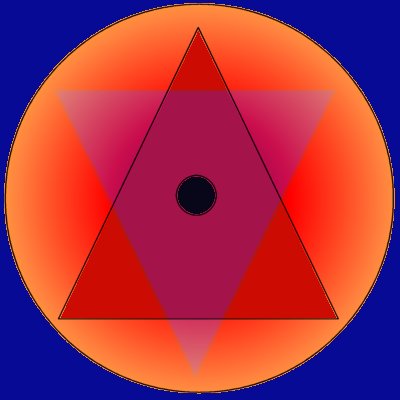introduction jnani raja hatha tantric kundalini laya mantra karma bhakti sufism vajrayana zen taoist
Jnani Yoga

This is the Yoga of knowledge. Bhagwan Ramana Maharishi was known as a jnani - a knower. The sages of the Upanishads drew their disciples near to them and whispered the secret in their ear - "Thou art That".
There is a sense, then, in which one can understand. There is a sense that enlightenment has a noetic quality. This does not mean that there are necessarily propositional answers to the great koans of existence. (See Zen.) Rather, there is a feeling of understanding. It seems to me that this feeling is one of the puzzles themselves dropping away as a concern, rather than their being solved.
Practically, this means taking intellect to its limit. The great koan, "Who am I?" can be approached by seeing what you are not. You are not the body, for example, because you can observe the body as the object of an act of cognition and you are the subject of that act. Similarly, you are not the one who observes the body as separate from itself, since that whole process can be observed as a an object. But neither are you that one since he too can be observed and objectified. The search for self as the subject of knowledge leads into an infinite regress. By experiencing the vertiginous descent into this regress, the ungraspability of the subject of cognition is experientially realised and the great luminous void opens up. The subject-object distinction is subverted by this ungraspability, for all intents and purposes this non-existence of the subject.
The above is a rather negative way - nothing observable is self: always we can say "neti, neti" - "not this, not this". By contrast, we may take a path of embrace, a positive way. "Who am I? Is the air me? Is the air in my lungs separate from the air around me? How can it be? Is it separate form me? How can it be? The air then is a part of me. But that air also cycles through the leaves of the trees and the lungs of creatures, human and other. The trees then are me. The creatures then are me." Etc. This way dissolves boundaries through a method of intellectual enquiry - including the subject-object boundary. When the conceptual boundaries are dissolved, there is a quiescence of discursive mental activity which is identical with Patanjali's nirhoda vritti chittam. (See Raja Yoga). This is because the boundaries around the concepts necessary for thought (e.g. such as separate truth from falsehood, subject from object) are not present, so thought is not possible, or at least has no weight or power to torture us. This is a quiescence of the will to truth, the dissolving of the puzzle of identity rather than the solution to it.
Resources
Translation of The Kena Upanishad. Other principal Upanishads also on this site.
The site of contemporary jnani Jean Klein.
introduction jnani raja hatha tantric kundalini laya mantra karma bhakti sufism vajrayana zen taoist

